Lovenox is a commonly used anticoagulant, and nurses must be aware of its nursing considerations to ensure safe and effective patient care. Read on to learn more about Lovenox (enoxaparin) nursing considerations.
What is Lovenox?
Lovenox is a brand name for a medication called enoxaparin sodium. It is a type of anticoagulant, or blood thinner, that helps prevent blood clots from forming in the veins. Lovenox works by inhibiting the activity of certain clotting factors in the blood, which reduces the likelihood of clot formation. It is often used to prevent deep vein thrombosis (DVT) and pulmonary embolism (PE) in people who are at risk due to surgery, bed rest, or other medical conditions. It is also used to treat DVT and PE when they have already occurred. In addition, Lovenox may be used to prevent blood clots in people with unstable angina or non-Q wave myocardial infarction (a type of heart attack). Lovenox is usually given by injection under the skin, and the dose and duration of treatment depend on the individual’s condition and response to the medication. As with all medications, Lovenox can have potential side effects, including bleeding, bruising, and pain or irritation at the injection site. It is important to discuss the risks and benefits of Lovenox with a healthcare provider before using this medication.
Generic Name
- enoxaparin sodium
Brand Names
Enoxaparin is sold under various brand names around the world. Here are some examples:
- Lovenox (United States and Canada)
- Clexane (Europe, Asia, and Latin America)
- Xaparin (Australia)
- Enoxaparin Winthrop (Australia)
- Enoparin (India)
- Epilim (India)
Drug Classification of Lovenox
The drug classification of Lovenox is:
Therapeutic Class
Pharmacologic Class
Indications and Therapeutic Effects
Lovenox (enoxaparin) is a medication used to prevent and treat blood clots. Some indications for the use of Lovenox include:f
1. Deep vein thrombosis (DVT). Lovenox can be used to prevent DVT, which is the formation of blood clots in the veins, usually in the legs.
2. Pulmonary embolism (PE). Lovenox can be used to treat or prevent PE, which is the blockage of a blood vessel in the lungs by a blood clot.
3. Unstable angina and non-ST-segment elevation myocardial infarction (NSTEMI). Lovenox can be used in combination with other medications to treat these types of heart conditions.
4. ST-segment elevation myocardial infarction (STEMI). Lovenox can be used in combination with other medications to treat this type of heart attack.
5. Preventing blood clots during certain types of surgery. Lovenox can be used to prevent blood clots from forming during hip or knee replacement surgery, abdominal surgery, or in people who are at high risk of developing blood clots.
Mechanism of Action
Lovenox (enoxaparin) works by inhibiting the activity of a protein in the blood called Factor Xa, which plays a key role in the blood clotting process. By inhibiting Factor Xa, Lovenox helps prevent the formation of blood clots by reducing the conversion of prothrombin to thrombin, a critical step in the clotting cascade. It is a type of heparin, which is a naturally occurring anticoagulant. However, Lovenox is a low molecular weight heparin (LMWH), which means that it has a smaller molecular size than traditional heparin. This smaller size allows Lovenox to more easily penetrate the walls of blood vessels and be absorbed by the body, making it a more effective and convenient treatment for preventing and treating blood clots. Overall, the mechanism of action of Lovenox involves inhibiting Factor Xa, which reduces the formation of blood clots and helps prevent conditions such as deep vein thrombosis, pulmonary embolism, and certain types of heart conditions.
Precautions and Contraindications
While Lovenox (enoxaparin) is an effective medication for preventing and treating blood clots, there are some precautions and contraindications to be aware of. These include:
Precautions
1. Bleeding disorders. Lovenox should be used with caution in people who have a history of bleeding disorders, uncontrolled high blood pressure, or a recent stroke.
2. Elderly. Lovenox should be used with caution in people who are elderly and debilitated as these individuals may be at increased risk for bleeding complications.
3. Kidney or liver problems. Lovenox should be used with caution in people with kidney or liver problems as these individuals may be at increased risk for bleeding complications.
4. Allergies. Lovenox should not be used in people with an active bleeding disorder or a known allergy to heparin or any of the components of the medication.
5. Other medications. Lovenox should be used with caution in people who are taking other medications that increase the risk of bleeding, such as nonsteroidal anti-inflammatory drugs (NSAIDs), aspirin, or anticoagulants like warfarin.
Contraindications
1. Heparin-induced thrombocytopenia (HIT). Lovenox should not be used in people with a history of heparin-induced thrombocytopenia (HIT), a rare but serious reaction to heparin that can cause a dangerous drop in blood platelets.
2. Active bleeding. Lovenox should not be used in people with an active or recent history of major bleeding, such as gastrointestinal bleeding or hemorrhagic stroke.
3. Endocarditis. Lovenox should not be used in people with bacterial endocarditis, an infection of the lining of the heart and heart valves.
4. Spinal anesthesia. Lovenox should not be used in people who are undergoing spinal anesthesia or a spinal puncture, as this can increase the risk of bleeding into the spinal cord.
Drug Interactions
Drug-Drug
Lovenox (enoxaparin) may interact with other medications, which can affect its effectiveness or increase the risk of side effects. Some common drug-drug interactions of Lovenox include:
1. Other blood-thinning medications. Taking Lovenox with other blood-thinning medications, such as warfarin, aspirin, or nonsteroidal anti-inflammatory drugs (NSAIDs), can increase the risk of bleeding.
2. Heparin. Using Lovenox with other types of heparin can increase the risk of bleeding or other side effects.
3. Thrombolytics. Lovenox may increase the risk of bleeding when used with thrombolytic medications, which are used to break up blood clots.
4. SSRIs and SNRIs. Lovenox may increase the risk of bleeding when used with selective serotonin reuptake inhibitors (SSRIs) or serotonin-norepinephrine reuptake inhibitors (SNRIs), which are commonly used to treat depression and anxiety.
5. Nonsteroidal anti-inflammatory drugs (NSAIDs). Using Lovenox with NSAIDs, such as ibuprofen or naproxen, can increase the risk of bleeding.
6. Antiplatelet medications. Using Lovenox with antiplatelet medications, such as clopidogrel or ticlopidine, can increase the risk of bleeding.
7. Digoxin. Lovenox may increase the risk of digoxin toxicity, which can cause nausea, vomiting, and other symptoms.
Drug-Natural Products
Lovenox (enoxaparin) may interact with natural products, such as herbs and supplements, which can affect its effectiveness or increase the risk of side effects. Some natural product-drug interactions of Lovenox include:
1. Garlic. Garlic supplements may increase the risk of bleeding when used with Lovenox.
2. Ginger. Ginger is a natural product that has blood-thinning properties and may increase the risk of bleeding when taken with Lovenox.
3. Ginkgo biloba. Ginkgo biloba may increase the risk of bleeding when used with Lovenox.
4. Vitamin E. High doses of vitamin E supplements may increase the risk of bleeding when used with Lovenox.
5. Fish oil. Fish oil supplements may increase the risk of bleeding when used with Lovenox.
6. Danshen. Danshen, a traditional Chinese herb, may increase the risk of bleeding when used with Lovenox.
7. Dong quai. Dong quai, another traditional Chinese herb, may increase the risk of bleeding when used with Lovenox.
8. Saw palmetto. Saw palmetto supplements may increase the risk of bleeding when used with Lovenox.
Drug-Food
There are no known significant drug-food interactions with Lovenox (enoxaparin). However, it is important to maintain a healthy, balanced diet while taking Lovenox to support overall health.
Adverse Effects
Lovenox (enoxaparin) is generally well-tolerated, but like any medication, it may cause side effects or adverse reactions. Some common side effects of Lovenox include:
1. Bleeding. Lovenox is a blood-thinning medication and may increase the risk of bleeding. This can include bleeding from the gums, nosebleeds, or bruising.
2. Injection site reactions. Lovenox is injected subcutaneously (under the skin), and this can cause local reactions such as pain, bruising, or redness at the injection site.
3. Allergic reactions. Some people may have an allergic reaction to Lovenox, which can range from mild to severe. Symptoms may include hives, itching, swelling, difficulty breathing, or chest pain.
4. Thrombocytopenia. Lovenox can cause a decrease in the number of platelets in the blood, a condition known as thrombocytopenia. This can lead to increased bleeding or bruising.
5. Osteoporosis. Long-term use of Lovenox may increase the risk of developing osteoporosis, a condition that weakens bones and makes them more prone to fractures.
6. Nausea or vomiting. Some people may experience nausea or vomiting after taking Lovenox.
7. Diarrhea. Lovenox may cause diarrhea in some people.
8. Headache. Lovenox may cause headaches in some people.
Administration Considerations
Available Forms
- Solution for injection (prefilled syringes): 30 mg/ 0.3 mL, 40 mg/0.4 mL, 60 mg/0.6 mL, 80 mg/0.8 mL, 100 mg/1 mL, 120 mg/0.8 mL, 150 mg/mL.
Dosage for Adults
- Subcut (Adults)
- VTE prophylaxis in patients undergoing knee replacement surgery — 30 mg q 12 hr starting 12 – 24 hr postop for 7 – 10 days
- VTE prophylaxis in patients undergoing hip replacement surgery—30 mg q 12 hr starting 12–24 hr postop or 40 mg once daily starting 12 hr before surgery (either dose may be continued for 7 – 14 days; continued prophylaxis with 40 mg once daily may be continued for up to 3 wk)
- VTE prophylaxis following abdominal surgery — 40 mg once daily starting 2 hr before surgery and then continued for 7 – 12 days or until ambulatory (up to 14 days)
- VTE prophylaxis in medical patients with acute illness — 40 mg once daily for 6 – 14 days
- Treatment of DVT/PE (outpatient) — 1 mg/kg q 12 hr. Warfarin should be started within 72 hr; enoxaparin may be continued for a minimum of 5 days and until therapeutic anticoagulation with warfarin is achieved (INR >2 for 2 consecutive days)
- Treatment of DVT/PE (inpatient) — 1 mg/kg q 12 hr or 1.5 mg/kg once daily. Warfarin should be started within 72 hr; enoxaparin may be continued for a minimum of 5 days and until therapeutic anticoagulation with warfarin is achieved (INR >2 for two consecutive days)
- Unstable angina/non–ST-segment-elevation MI—1 mg/kg q 12 hr for 2 – 8 days (with aspirin).
- IV, Subcut (Adults <75 yr)
- Acute ST-segment-elevation MI — Administer single IV bolus of 30 mg plus 1 mg/kg subcut dose (maximum of 100 mg for first 2 doses only), followed by 1 mg/kg subcut q 12 hr. The usual duration of treatment is 2 – 8 days. In patients undergoing percutaneous coronary intervention, if last subcut dose was <8 hr before balloon inflation, no additional dosing needed; if last subcut dose was ≥8 hr before balloon inflation, administer single IV bolus of 0.3 mg/kg.
- Subcut (Adults ≥75 yr)
- Acute ST-segment-elevation MI — 0.75 mg/kg every 12 hr (no IV bolus needed) (maximum of 75 mg for first 2 doses only; no initial bolus). The usual duration of treatment is 2 – 8 days.
Renal Impairment
- Subcut (Adults CCr <30 mL/min)
- VTE prophylaxis for abdominal or knee/hip replacement surgery— 30 mg once daily. Treatment of DVT/PE — 1 mg/kg once daily.
- Unstable angina/non-ST-segment-elevation MI — 1 mg/kg once daily.
- Acute ST-segment-elevation MI (patients <75 yr) — Single IV bolus of 30 mg plus 1 mg/kg subcut dose, followed by 1 mg/kg subcut once daily.
- Acute ST-segment-elevation MI (patients ≥75 yr) — 1 mg/kg once daily (no initial bolus).
Pharmacokinetics
Pharmacokinetics refers to the way in which the body processes a drug, including how it is absorbed, distributed, metabolized, and eliminated. The pharmacokinetics of Lovenox are influenced by a number of factors, including the dose, route of administration, and patient characteristics such as age, weight, and kidney function.
1. Absorption. Lovenox is administered by injection, either subcutaneously or intravenously. When given subcutaneously, Lovenox is rapidly and completely absorbed, with peak concentrations in the blood occurring within four hours. The bioavailability of Lovenox is nearly 100% when given by the subcutaneous route, making it an effective and reliable means of administration.
2. Distribution. Lovenox is primarily distributed in the blood and extravascular fluid, and does not cross the blood-brain barrier. The distribution of Lovenox is dependent on its molecular weight, with smaller molecules having greater distribution than larger molecules. The volume of distribution of Lovenox is approximately 5-7 liters in healthy adults.
3. Metabolism. Lovenox is primarily metabolized in the liver by the action of enzymes such as heparinase and heparinase-like enzymes. Unlike unfractionated heparin, Lovenox does not require the presence of the protein antithrombin III to exert its anticoagulant effects. The elimination half-life of Lovenox is approximately four hours.
4. Elimination. Lovenox is eliminated from the body through a combination of renal and non-renal mechanisms. Approximately 10% of Lovenox is excreted unchanged in the urine, while the remaining 90% is metabolized and eliminated in the feces. In patients with renal impairment, the clearance of Lovenox may be reduced, which can increase the risk of bleeding and other adverse effects.
5. Half-life. Enoxaparin — 3 – 6 hr (all are increased in renal insufficiency).
Nursing Considerations for Lovenox
Lovenox is a medication used to prevent blood clots in patients who are at risk for deep vein thrombosis (DVT) or pulmonary embolism (PE). As a nurse, it’s important to be aware of the following nursing considerations when administering Lovenox:
Nursing Assessment
A nursing assessment for a patient receiving Lovenox would include the following:
1. Review the patient’s medical history, especially any history of bleeding disorders, clotting disorders, recent surgery, or trauma.
This can affect the safety and effectiveness of Lovenox.
2. Monitor the patient’s vital signs, including blood pressure, pulse, and oxygen saturation, before and after administering Lovenox.
Changes in vital signs may indicate an adverse reaction to the medication.
3. Observe the injection site for signs of bleeding, such as bruising, redness, or swelling. If the patient complains of pain or discomfort at the injection site.
These measures determines possible inflammation or infection.
4. Assess the patient’s bleeding risk, including any current medications or medical conditions that may increase the risk of bleeding, such as anticoagulant therapy, liver or kidney disease, or recent surgery.
Lovenox should be used with caution in people who are taking other medications that increase the risk of bleeding, such as nonsteroidal anti-inflammatory drugs (NSAIDs), aspirin, or anticoagulants like warfarin.
5. Assess the patient for signs of an allergic reaction to Lovenox, such as itching, hives, rash, shortness of breath, or swelling of the face, lips, tongue, or throat. If any of these symptoms occur, stop the medication immediately and notify the healthcare provider.
Lovenox should not be used in people with an active bleeding disorder or a known allergy to heparin or any of the components of the medication.
6. Monitor the patient’s complete blood count (CBC) and platelet count regularly, especially if they are taking Lovenox for a prolonged period.
Changes in blood counts may indicate an adverse reaction or affect the safety and efficacy of Lovenox.
7. Assess the patient’s understanding of Lovenox, including its purpose, dosage, administration, and potential side effects. Provide education on self-injection if the patient will be administering Lovenox at home.
By conducting a thorough nursing assessment, nurses can help ensure the safety and effectiveness of Lovenox for the patient.
8. Assess for constipation.
Monitor the patient’s bowel movements and provide interventions to prevent or treat constipation, such as increasing fiber intake, encouraging hydration, and administering stool softeners or laxatives as prescribed.
Nursing Diagnosis
Here are some potential nursing diagnoses for a patient receiving Lovenox:
1. Risk for bleeding. Risk for bleeding related to the anticoagulant effects of Lovenox and the patient’s medical history.
2. Risk for injury. Risk for injury related to bleeding or hematoma formation at the injection site.
3. Risk for infection. Risk for infection related to improper injection technique or poor hygiene.
Knowledge deficit related to Lovenox therapy, including dosage, administration, and potential side effects.
4. Impaired physical mobility. Impaired physical mobility related to bedrest or immobilization, which can increase the risk of deep vein thrombosis or pulmonary embolism.
5. Anxiety. Anxiety related to the need for anticoagulant therapy and potential complications.
Ineffective therapeutic regimen management related to difficulty with self-injection or inadequate follow-up care.
6. Impaired skin integrity. Impaired skin integrity related to ecchymosis or hematoma formation at the injection site.
7. Constipation. Constipation related to immobility or changes in diet and fluid intake.
8. Risk for ineffective tissue perfusion. Risk for ineffective tissue perfusion related to arterial or venous thrombosis.
Lovenox Nursing Considerations
The following are some lovenox nursing interventions:
1. Administer Lovenox as prescribed.
Follow the physician’s orders for dosage, route, and timing of Lovenox administration.
2. Ensure that the injection site is clean and that the medication is injected subcutaneously at a 90-degree angle.
Proper administration of Lovenox is essential for effective treatment, and this includes ensuring that the injection site is clean and that the medication is injected subcutaneously at a 90-degree angle.
2. For toxicity and overdose, administer protamine sulfate 1 mg for each mg of Lovenox (enoxaparin) by slow IV injection.
Protamine sulfate should be administered for Lovenox (enoxaparin) toxicity or overdose.
3. Promote mobility.
Encourage the patient to move around as much as possible to prevent deep vein thrombosis or pulmonary embolism.
4. Assist with range-of-motion exercises if the patient is bedridden.
This is vital to prevent blood clots, maintain joint flexibility, prevent muscle atrophy, and improve well-being.
5. Provide emotional support.
Address the patient’s concerns and fears related to Lovenox therapy and potential complications. Offer information and resources to help them cope with the physical and emotional aspects of their condition.
Intravenous Administration
1. IV Push
(For treatment of STEMI only) Inject via IV line. Flush with 0.9% NaCl or D5W prior to and following administration to avoid mixture with other drugs and clear the port of the drug. May be administered with 0.9% NaCl or D5W.
Rate: Inject as a bolus.
2. Y-Site Incompatibility
Do not mix or co-administer with other medications.
Patient Education and Teaching
Patient education and teaching for Lovenox is an essential part of treatment as it can help improve medication adherence, reduce the risk of complications, and promote overall patient safety. Here are some key aspects of patient education for Lovenox:
1. Explain the purpose of Lovenox to patient.
Patients should be informed about why they are taking Lovenox, its mechanism of action, and how it helps prevent blood clots.
2. Educate patient about dosing and administration of Lovenox.
Patients should be taught how to properly administer Lovenox and follow their prescribed dosing schedule. They should also be advised on how to properly dispose of used needles and syringes.
3. Provide health teaching about injection site care.
Proper injection site care can help reduce the risk of infection, bleeding, and bruising. Patients should be taught how to clean the injection site and rotate injection sites to prevent tissue damage.
4. Advise patient to report any symptoms of unusual bleeding or bruising, dizziness, itching, rash, fever, swelling, or difficulty breathing to healthcare professional immediately.
Patients should be instructed to monitor for signs of bleeding, bruising, or other side effects and to report any concerns to their healthcare professional.
5. Instruct patient not to take aspirin or NSAIDs without consulting healthcare professional while on therapy.
Patients should be advised to inform their healthcare provider about any other medications or supplements they are taking, as some medications can interact with Lovenox and increase the risk of bleeding.
6. Advise patient to make necessary lifestyle modifications.
Patients should be advised to make necessary lifestyle modifications such as avoiding activities that may increase the risk of bleeding or injury, maintaining a healthy diet, and quitting smoking.
7. Discuss with patient the importance of follow-up care.
Patients should be instructed to keep all scheduled appointments with their healthcare provider to ensure proper monitoring and adjustment of treatment as needed.
Evaluation and Desired Outcomes
The evaluation and desired outcomes of Lovenox are as follows:
1. Prevention of DVT and pulmonary emboli. Lovenox is evaluated based on its ability to reduce the risk of complications such as deep vein thrombosis (DVT), pulmonary embolism (PE), stroke, and heart attack in patients.
2. Prevention of blood clots. The primary desired outcome of Lovenox is the prevention of blood clots. By preventing blood clots from forming, Lovenox can help reduce the risk of serious complications.
3. Resolution of existing blood clots. In patients who already have blood clots, the desired outcome of Lovenox is to help dissolve the clots and prevent new ones from forming.
4. Prevention of ischemic complications (with aspirin) in patients with unstable angina or non–ST–segment–elevation MI. Lovenox is a medication that is used in combination with aspirin to prevent ischemic complications in patients with unstable angina or non-ST-segment-elevation myocardial infarction (NSTEMI).
5. Treatment of acute ST-segment elevation myocardial infarction. Lovenox is a type of anticoagulant medication that works by preventing the formation of blood clots, which can help reduce the risk of serious complications and improve outcomes for patients with STEMI.
6. Improved quality of life. By preventing serious complications, Lovenox can help improve a patient’s quality of life by reducing the risk of hospitalization, disability, or death.
Recommended Resources
Our recommended nursing pharmacology resources and books:
Disclosure: Included below are affiliate links from Amazon at no additional cost from you. We may earn a small commission from your purchase which will help support us. Thank you! For more information, check out our privacy policy.
Pharm Phlash! Pharmacology Flash Cards #1 BEST SELLER!
Test-yourself review cards put critical clinical information for nearly 400 of the top generic medications at your fingertips. And, you can count on them for accuracy, because each card is based on content from Davis’s Drug Guide for Nurses. Increase your test scores in pharmacology class.
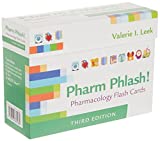
Focus on Pharmacology (8th Edition)
Focus on Nursing Pharmacology makes challenging concepts more approachable. Engaging learning features cultivate your clinical application, critical thinking and patient education capabilities. This updated 8th edition builds on your knowledge of physiology, chemistry and nursing fundamentals to help you conceptualize need-to-know information about each group of drugs.
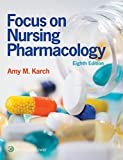
Pharmacology Made Incredibly Easy (Incredibly Easy! Series®)
Nursing pharmacology guide offers step-by-step guidance so you can grasp the fundamentals in enjoyable Incredibly Easy style. This is the perfect supplement to class materials, offering solid preparation for NCLEX® as well as a handy refresher for experienced nurses. Colorfully illustrated chapters offer clear, concise descriptions of crucial nursing pharmacology concepts and procedures.
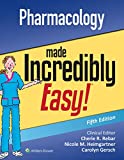
Lehne’s Pharmacology for Nursing Care (11th Edition)
The Eleventh Edition of Lehne’s Pharmacology for Nursing Care provides a thorough understanding of key drugs and their implications for nursing care. This text, written by renowned nursing educators, helps you comprehend and apply pharmacology principles. A clear and engaging writing style simplifies complex concepts, making even the most challenging pharmacology content enjoyable. We recommend this book if you want a comprehensive nursing pharmacology guide.
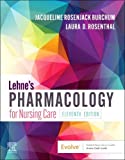
Nursing Drug Handbook
Nursing2023 Drug Handbook delivers evidence-based, nursing-focused drug monographs for nearly 3700 generic, brand-name, and combination drugs. With a tabbed, alphabetical organization and a “New Drugs” section, NDH2023 makes it easy to check drug facts on the spot.
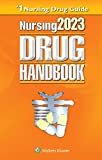
Pharmacology and the Nursing Process
The 10th edition of Pharmacology and the Nursing Process offers practical, user-friendly pharmacology information. The photo atlas contains over 100 unique illustrations and photographs depicting drug administration techniques. Updated drug content reflects the most recent FDA drug approvals, withdrawals, and therapeutic uses.
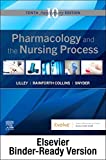
Mosby’s Pharmacology Memory NoteCards: Visual, Mnemonic, and Memory Aids for Nurses
The 6th edition of Mosby’s Pharmacology Memory NoteCards: Visual, Mnemonic, & Memory Aids for Nurses incorporates illustrations and humor to make studying easier and more enjoyable. This unique pharmacology review can be utilized as a spiral-bound notebook or as individual flashcards, making it ideal for mobile study.
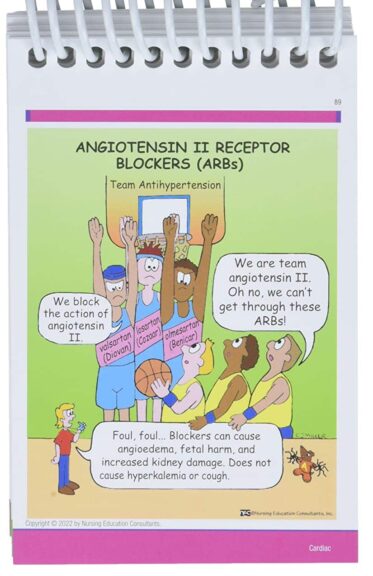
See Also
Here are other nursing pharmacology study guides:
- Nursing Pharmacology – Study Guide for Nurses
Our collection of topics related to nursing pharmacology - Pharmacology Nursing Mnemonics & Tips
These nursing mnemonics aim to simplify the concepts of pharmacology through the use of a simple, concise guide. - Generic Drug Name Stems Cheat Sheet
Learn about these generic drug name stems to help you make sense of drugs easier! - Common Drugs and Their Antidotes
A guide to drug antidotes that nurses should be familiar about. - IV Fluids and Solutions Guide & Cheat Sheet
Get to know the different types of intravenous solutions or IV fluids in this guide and cheat sheet. - Drug Dosage Calculations NCLEX Practice Questions (100+ Items)
Care to take the challenge? This quiz aims to help students and registered nurses alike grasp and master the concepts of medication calculation.
We have a pill for that…
Drug Guides NEW!
Individual drug guides and nursing considerations for the most common medications used in nursing pharmacology:
- Acetaminophen (Tylenol)
- Aspirin
- Atorvastatin (Lipitor)
- Enoxaparin (Lovenox)
- Furosemide (Lasix)
- Gabapentin
- Hydromorphone (Dilaudid)
- Lisinopril
- Metoprolol
- Morphine
Gastrointestinal System Drugs
Respiratory System Drugs
- Antihistamines
- Bronchodilators and Antiasthmatics
- Decongestants
- Expectorants and Mucolytics
- Inhaled Steroids
- Lung Surfactants
Endocrine System Drugs
- Adrenocortical Agents
- Antidiabetic Agents
- Glucose-Elevating Agents
- Hypothalamic Agents
- Insulin
- Parathyroid Agents: Bisphosphonates, Calcitonins
- Pituitary Drugs
- Sulfonylureas
- Thyroid Agents
Autonomic Nervous System Drugs
- Adrenergic Agonists (Sympathomimetics)
- Adrenergic Antagonists (Sympatholytics)
- Anticholinergics (Parasympatholytics)
- Cholinergic Agonists (Parasympathomimetics)
Immune System Drugs
Chemotherapeutic Agents
- Anthelmintics
- Anti-Infective Drugs
- Antibiotics
- Antifungals
- Antineoplastic Agents
- Antiprotozoal Drugs
- Antiviral Drugs
Reproductive System Drugs
Nervous System Drugs
- Antidepressants
- Antiparkinsonism Drugs
- Antiseizure Drugs
- Anxiolytics and Hypnotic Drugs
- General and Local Anesthetics
- Muscle Relaxants
- Narcotics, Narcotic Agonists, and Antimigraine Agents
- Neuromuscular Junction Blocking Agents
- Psychotherapeutic Drugs
Cardiovascular System Drugs
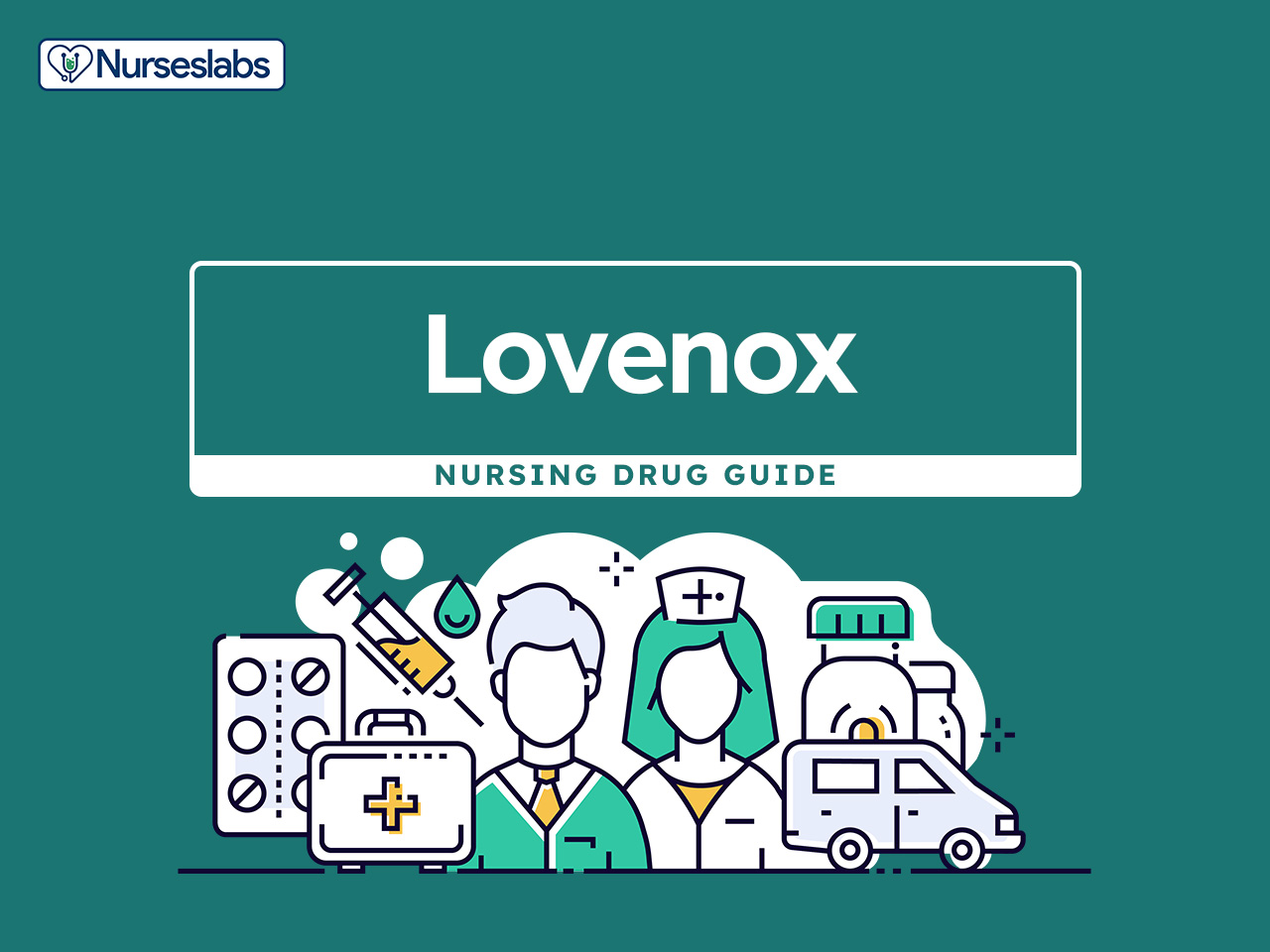
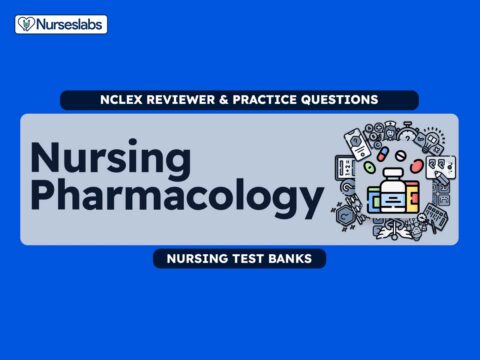
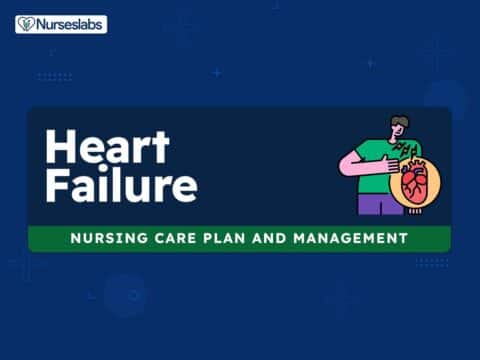

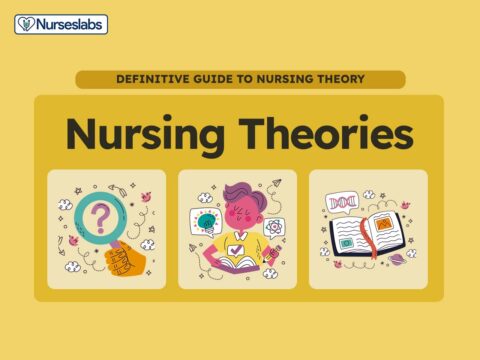


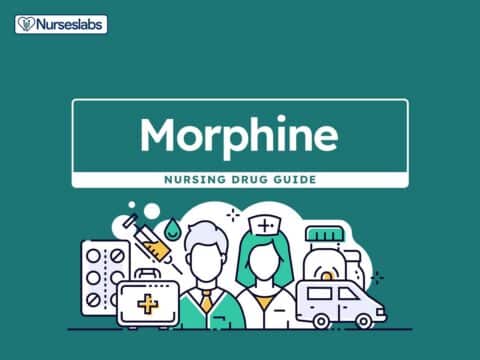
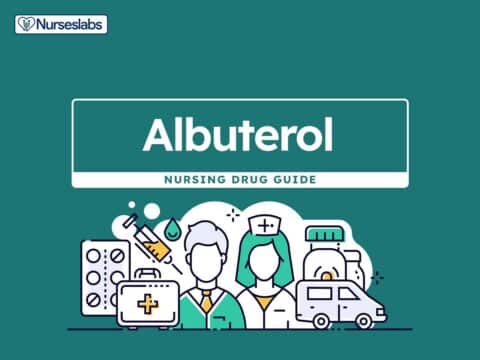
![Furosemide Nursing Considerations and Patient Teaching [Drug Guide]](https://nurseslabs.com/wp-content/uploads/2023/07/Furosemide-480x360.jpg)
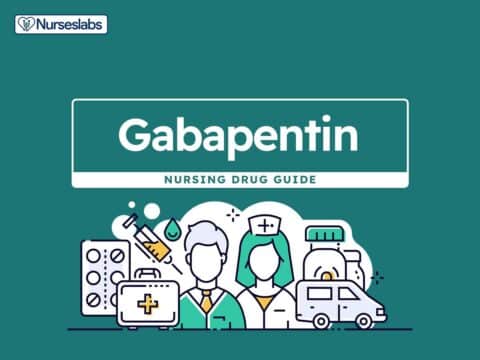
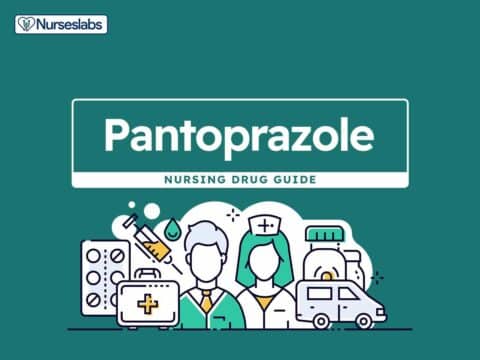
![Lisinopril Nursing Considerations and Patient Teaching [Drug Guide]](https://nurseslabs.com/wp-content/uploads/2023/03/Lisinopril-480x360.jpg)
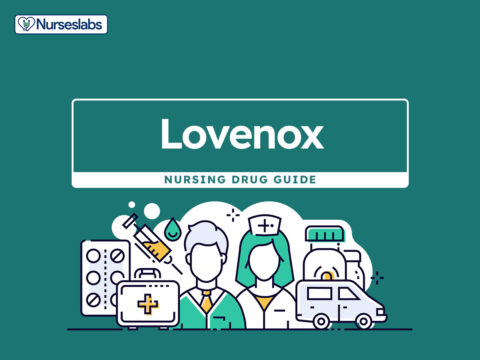
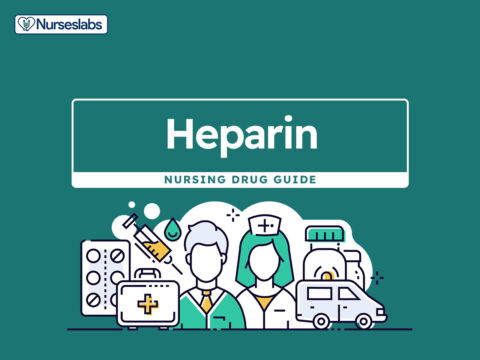
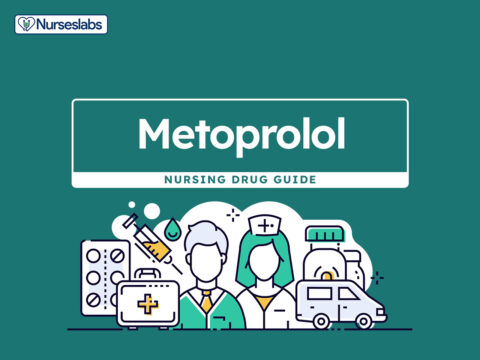
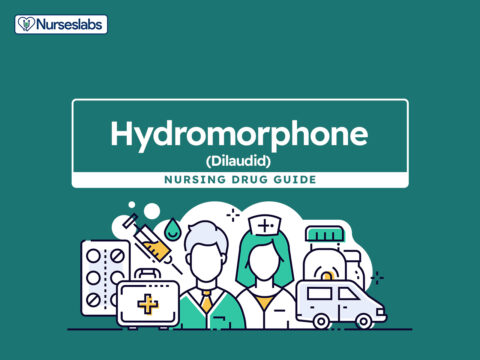
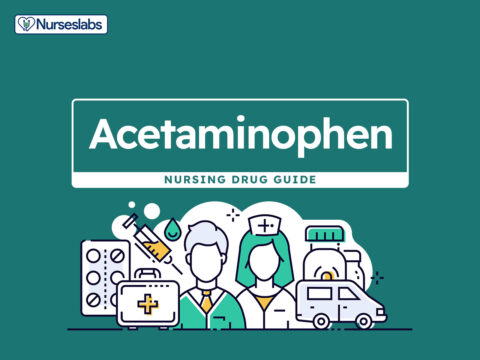

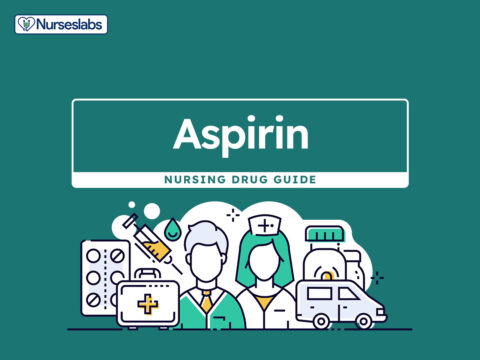
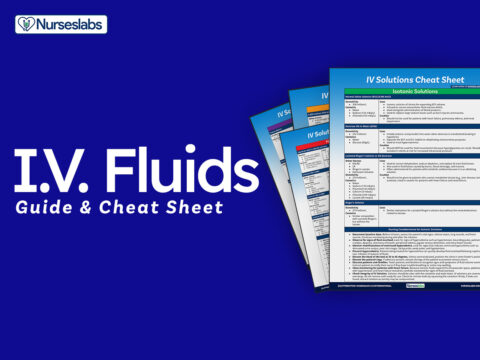
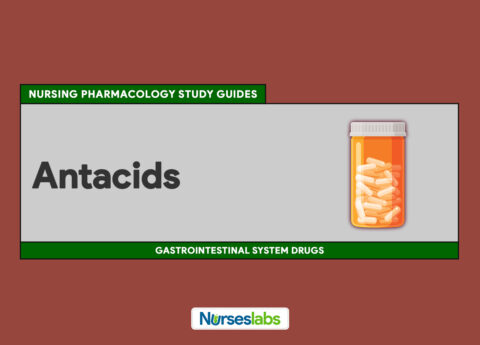
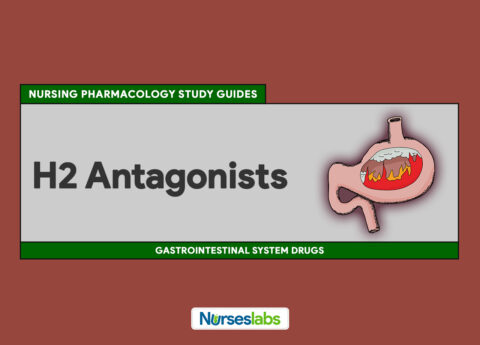
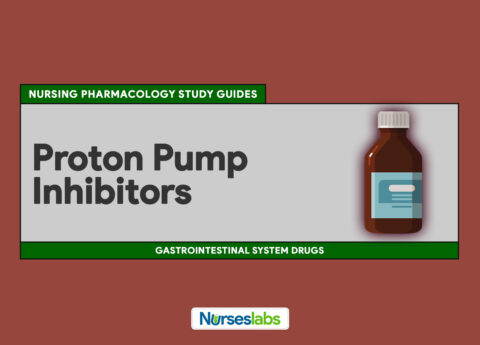
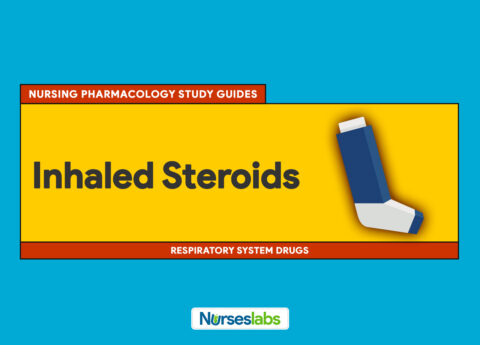
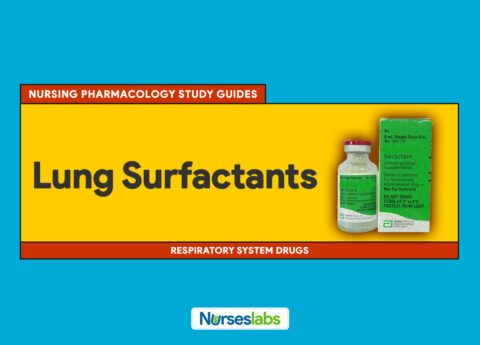

![Furosemide Nursing Considerations and Patient Teaching [Drug Guide]](https://nurseslabs.com/wp-content/uploads/2023/07/Furosemide-768x576.jpg)
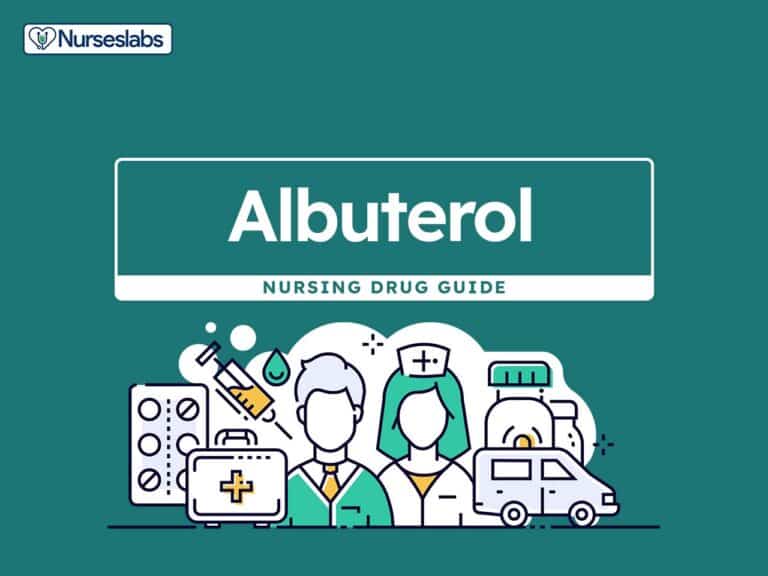
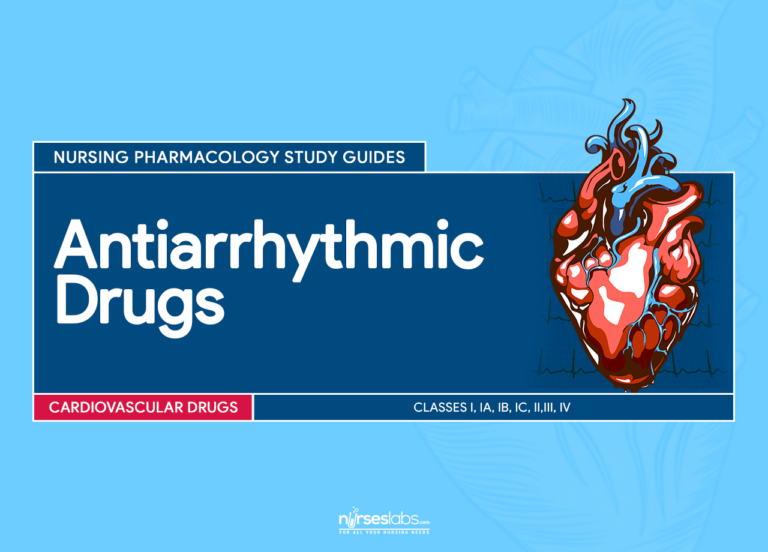
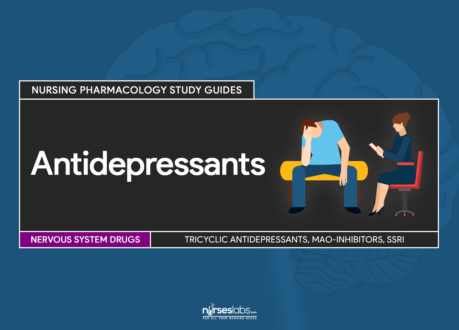
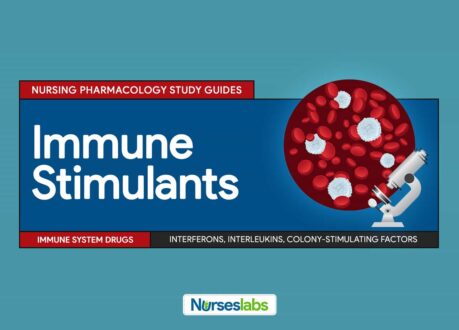
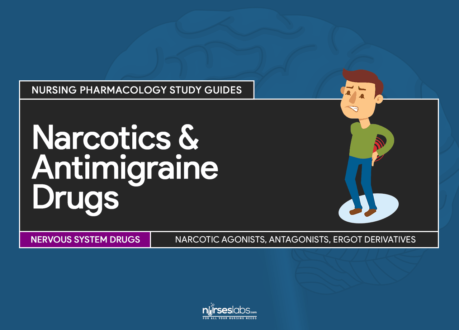
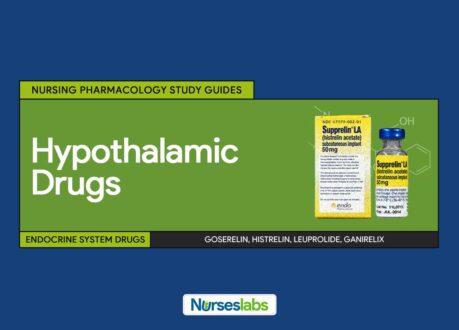
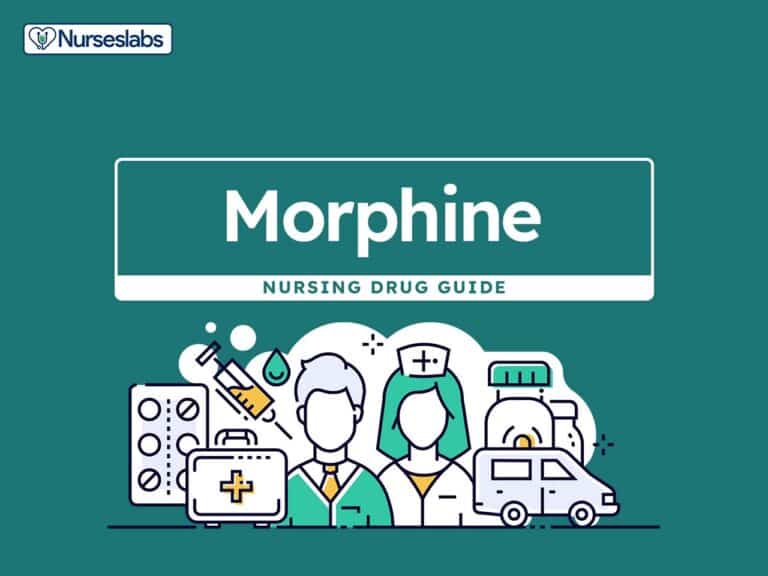
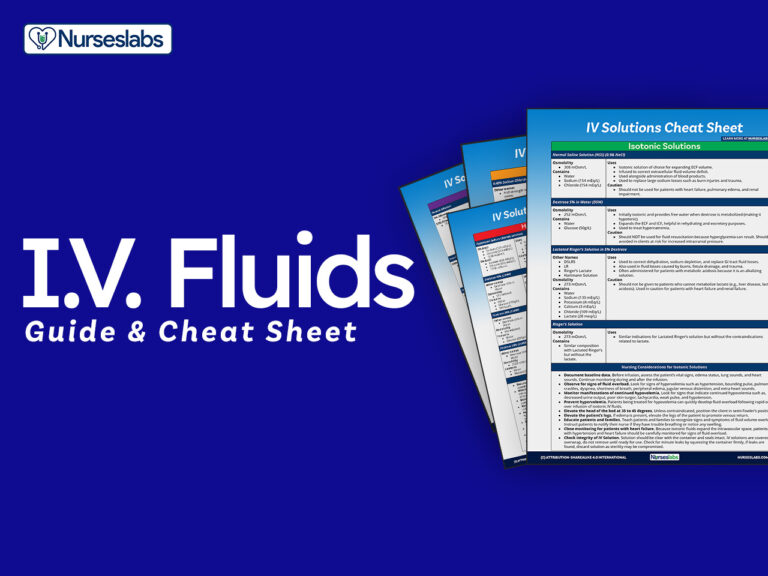
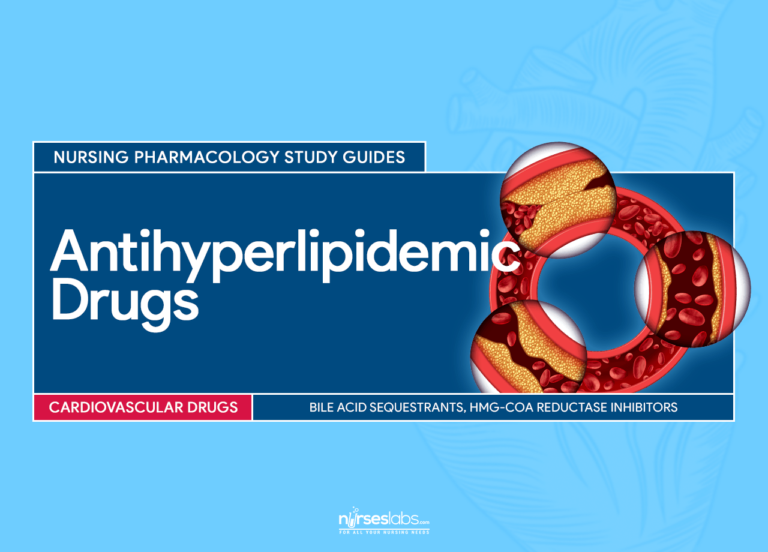
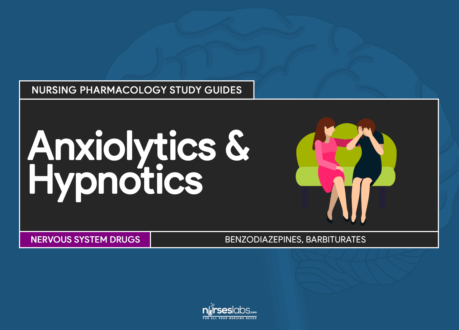
Leave a Comment